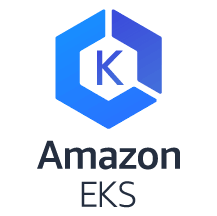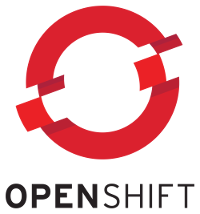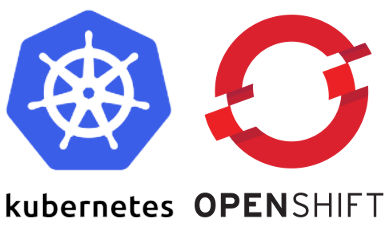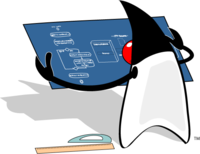
We recently had to install a bunch of applications on a customer’s shiny new OpenShift 3.11 cluster. Among others also GitLab. Turned out getting GitLab up and running on OpenShift is not so easy. What I found on the Internet about installing GitLab on OpenShift was partly outdated and not 100% accurate. Most information was about getting GitLab into a Kubernetes cluster. So I had to adapt these information to the situation in an OpenShift cluster.
This article is the conclusion of all these findings and efforts and gives a step-by-step recipe on how to install GitLab on OpenShift.

One of the most challenging questions in cloud environments is about how secure is my application when its deployed in the public cloud ?
Its no secret that security aspects are much more important in a public cloud than it was in classic environments.
But dont be surprised that many applications even in public cloud dont follow best practice security patterns.
This has several reasons for example time and costs are very high trying to achieve a high security level.
But in fact AWS and Kubernetes offer many options which let you improve your security level without too much effort.
I like to share some of the possibilities that you have when creating a secure AWS EKS cluster.
| Author: | Johannes Lechner |
|---|---|
| Tags: | AWS, EKS, Cloudwatch, Kubernetes, security, guide, networkpolicy, consulting, prevent, cyberdetection, cyberprevention, cyberattack, München, Consulting |
| Categories: | devops |

GraphQL is a nice way to publish a highly customizable API. In combination with Spring Boot, which makes development really easy and offers features like database integration and security, you can quickly build your API service from scratch.
This is the start of a series from articles showing you the way to a Spring Boot powered REST-Service with an API running Spring Boot and Graphql.
| Author: | Andy Degenkolbe |
|---|---|
| Tags: | SpringBoot, GraphQL, API, API Transformation |
| Categories: | development |

Under the name of “Managed Kubernetes for AWS”, or short EKS, Amazon offers its own dedicated solution for running Kubernetes upons its cloud platform. The way this is provided is quite interesting: While the Kubernetes Master Infrastructure is offered “as a service” (and also billed separately) the Kubernetes Worker Nodes are simply EC2 instances for which Amazon provides a special setup procedure. These now also offer the potential to use well known AWS features like Autoscaling for Kubernetes workloads.
However, manually setting up this infrastructure is still quite a complex process with multiple steps. To be able to quickly have an EKS Kubernetes Cluster up and running, and also to deploy a software project on it, we created a small helper project that offers the creation of a “turnkey ready” EKS cluster that can be quickly pulled up and also teared down after usage.
| Author: | Oliver Weise |
|---|---|
| Tags: | Kubernetes, aws, eks, eksctl |
| Categories: | development |

AWS offers a great service called “Amazon Elastic Container Service for Kubernetes” (AWS EKS).
The setup guide can be found here: Offical AWS EKS getting started guide
If you overload such a cluster it easily happens that your Kubelet gets “Out of Memory” (OOM) errors and stops working.
Once the Kubelet is down you can see kubectl get nodes that node is in state “NotReady”.
In addition if you describe your node kubectl describe $NODE you can see the status description is: “System OOM encountered”.
If you look on your pods kubectl get pods --all-namespaces you can see that pods are in state “Unknown” or in “NodeLost”.
Kubelet OOM errors should be avoided by all costs.
It causes to stop all pods on that node and its quite complicated for K8s to maintain high availability for applications in some cases.
For example for stateful sets with a single replica k8s cannot immediately move that pod to another node.
The reason is that k8s does not know how long the node with all its pods stays unavailable.
Therefore i like to share some best practice to avoid OOM problems in your AWS EKS clusters.
| Author: | Johannes Lechner |
|---|---|
| Tags: | AWS, EKS, Cloudwatch, Kubernetes, autoscaling, oom_killer, System-OOM |
| Categories: | devops |

In the first article of this series, Getting started with AWS Lambda, we used a Cloudformation template to provision and deploy all needed parts for our REST application.
In this and the following articles, we are going to explore components used in the template. The focus of this article is the network infrastructure components.
| Author: | Marco Bungart |
|---|---|
| Tags: | aws, networking |
| Categories: | devops |

Recently, I stumbled on a situation where I wanted to add a couple of values to an OpenShift deployment configuration. Previously I had modified or added a single attribute in a yaml file with oc patch. So I started to wonder whether it is possible to update multiple attributes with oc patch as well. To get right to the result: Yes, it is possible. This article will show you which features oc patch and likewise kubectl patch really have, beside a simple modification of one attribute.
| Author: | Olaf Meyer |
|---|---|
| Tags: | openshift, kubernetes |
| Categories: | development |

After some time, let’s move on to another topic around making OpenShift environments more developer friendly. This time we are going to look at what happens, when a system test actually failed, and how to enable developers to properly react.
| Author: | Oliver Weise |
|---|---|
| Tags: | openshift |
| Categories: | development |

Kubernetes and OpenShift have a lot in common. Actually OpenShift is more or less Kubernetes with some additions. But what exactly is the difference?
It’s not so easy to tell as both products are moving targets. The delta changes with every release - be it of Kubernetes or OpenShift. I tried to find out and stumbled across a few blog posts here and there. But they all where based on not so recent versions - thus not really up-to-date.
So I took the effort to compare the most recent versions of Kubernetes and OpenShift. At the time of writing v1.13 of Kubernetes and v3.11 of OpenShift. I plan to update this article as new versions become available.
| Author: | Markus Hansmair |
|---|---|
| Tags: | openshift, kubernetes |
| Categories: | devops |

The license change to Java SE 8, as well as the new license for Java SE 9 and onwards lead to confusion within the Java community. Looking for information on the web, one finds results in the spectrum from “Is Java in Jepoardy?” to “Java is still free!”. The good news is: yes, Java is still free. The bad news: not necessarily Oracle’s Java distribution.
In this article, we discuss the situation revolving around Oracle’s license change and its consequences. For this, we need to understand how the Oracle JDK is connected to OpenJDK. Furthermore, we take a look at some alternatives to Oracle’s Java distribution and how divergence between the different distribution is avoided.
What you will need:
| Author: | Marco Bungart |
|---|---|
| Tags: | java |
| Categories: | development |